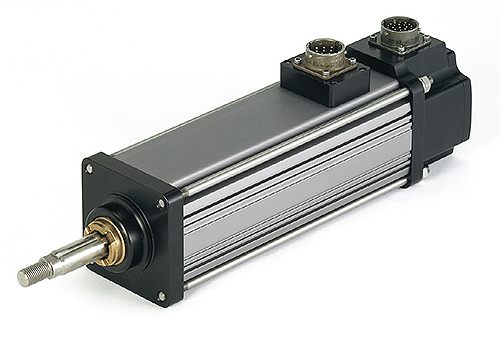If you’ve seen a Hollywood spy/thriller film in the past few years, you’ve undoubtedly witnessed a few vehicle security barriers in action. These barriers quickly rise out of the ground in the event of an attack or security risk, protecting buildings, installations, or other sensitive areas from speeding vehicles.

The GS X40 actuator combines the advantages of roller screw technology with a brushless servo design.
Robotic Security Systems, Inc. (RSSI), a Panama City, Fla., manufacturer of vehicle security barriers, has developed a simple and economical answer to physical access control, the RSS-2000—an electric, high-performance solution for raising wedge-style barriers.
RSSI designed an alternative all-electric vehicle barrier that is simple to install and operate, reliable, and cost-effective to maintain. One advantage of using electric barriers over hydraulics is environmental; electric barriers have no worry about oil leakage.
“The main difference between a hydraulic barrier and an electric barrier is performance. With electric motors, the barrier can operate faster—with more duty cycles and operations in a given time period—without sacrificing reliability,” said Bill Jempty, VP of sales and marketing for RSSI.
For a linear actuator that supported these goals, RSSI turned to Exlar Corp., based in Chanhassen, Minn. While RSSI had previously worked with a different linear motion products manufacturer, that company could not design a suitable solution within RSSI’s timeline.
“RSSI gave us the speed and force criteria they desired, as well as the amount of options that they wanted for the actuator. Once that criteria was defined, we produced an actuator in one week and sent it to the customer for testing purposes,” said Jason Eckman, regional sales manager for Exlar.
The actuator that made the cut, the GSX40, combines the advantages of roller screw technology with a brushless servo design. The roller screw mechanism—designed for converting electric motor power into linear motion within the actuator—features planetary rollers assembled around the actuator’s extending rod that follow threads, which are precisely machined on the inside surface of the actuator’s hollow armature. Linear motion is produced in precise synchronization with the armature rotation.
“The GSX40 … allowed us to move our barrier up and down faster with a higher number of duty cycles,” Jempty said. “The servomotor was especially helpful because it knows where the barrier is at all points in its operation. With the old style you only knew if the barrier was up or down.”
Since the roller screw mechanism features a relatively larger cumulative contact surface, the actuators have a long functional life and can handle heavy loads at high speeds.
The simple design requires almost no maintenance, even after high traffic volumes. The actuator delivers high speeds of up to 3000 rpm, which roughly translates into 10 in./sec for the barrier. The compact system allows for high torque, even at 0 speed, and the RSS-2000 was K-12 certified by the Department of State to stop a 15,000-lb vehicle traveling at 50 mph.
While a typical hydraulic barrier allows customers to manually raise or lower the barrier two to three times after a power outage, with the stored up pressure in the unit after a power outage, the actuator’s battery back-up system allows for 300 or more uses after the power has gone out.
Exlar
www.exlar.com
::Design World::
Filed Under: Actuators, Automotive, LINEAR MOTION, MECHANICAL POWER TRANSMISSION, Motion control • motor controls





Tell Us What You Think!